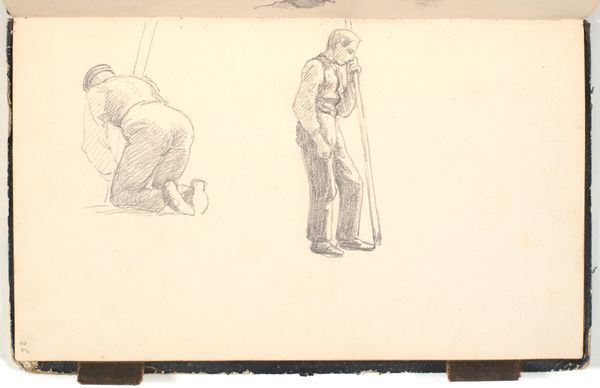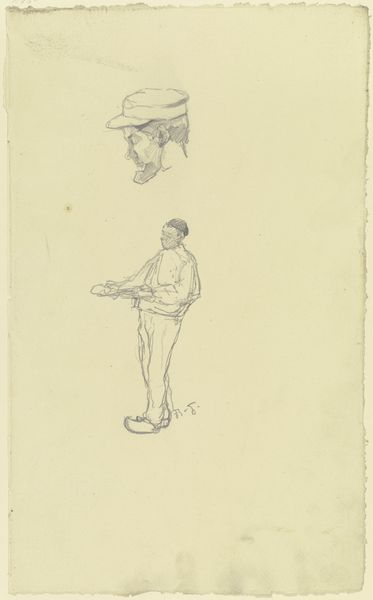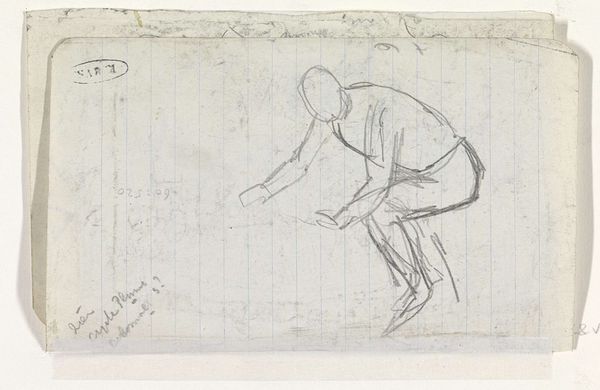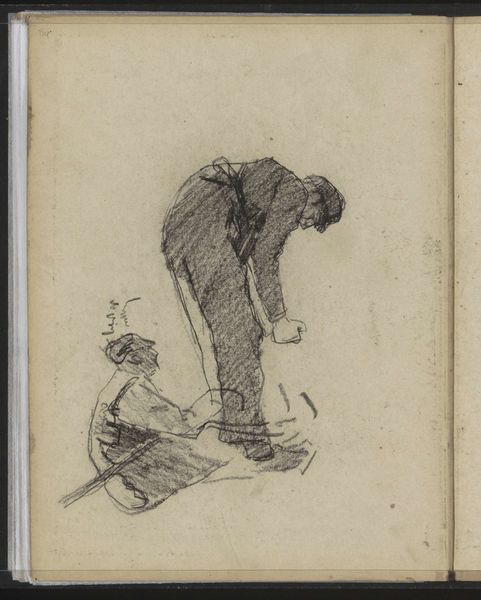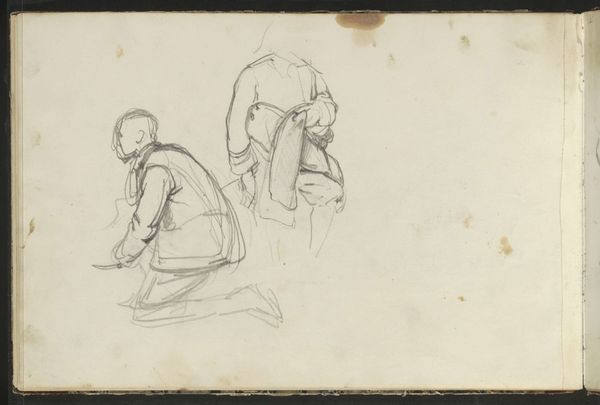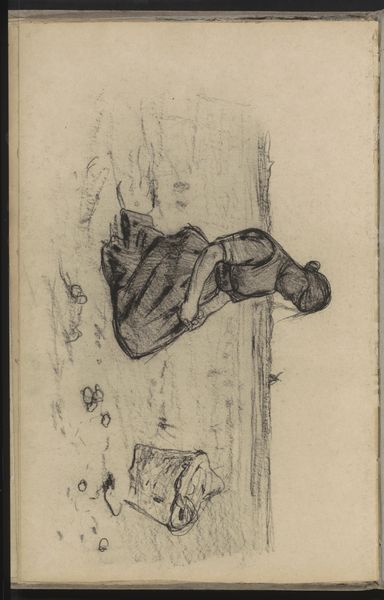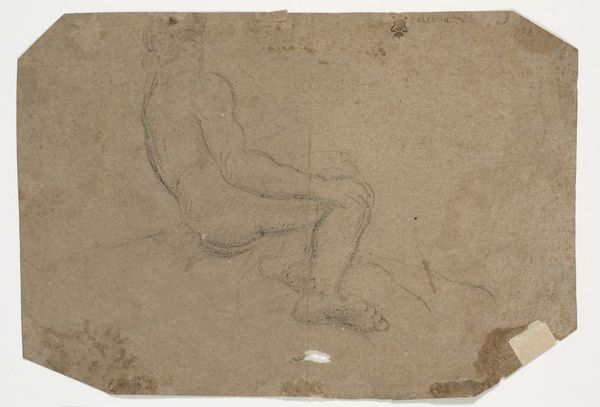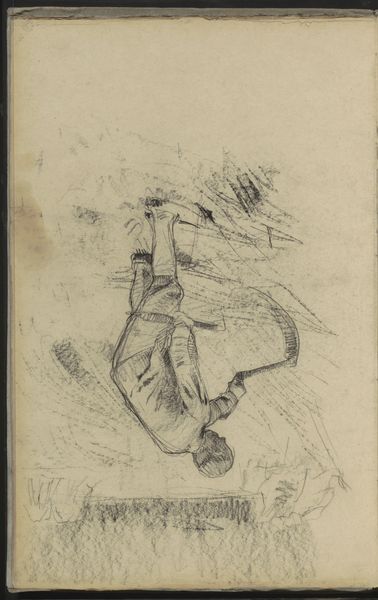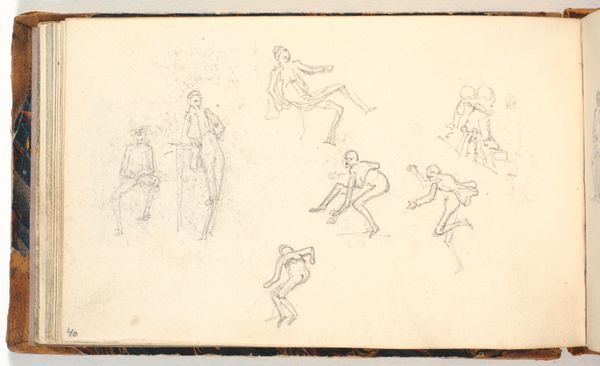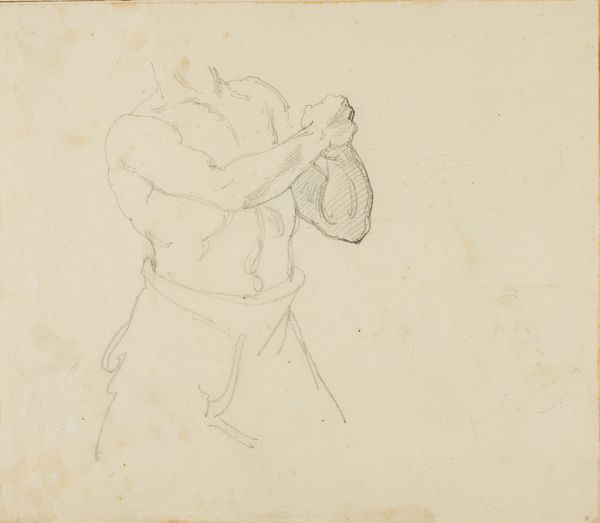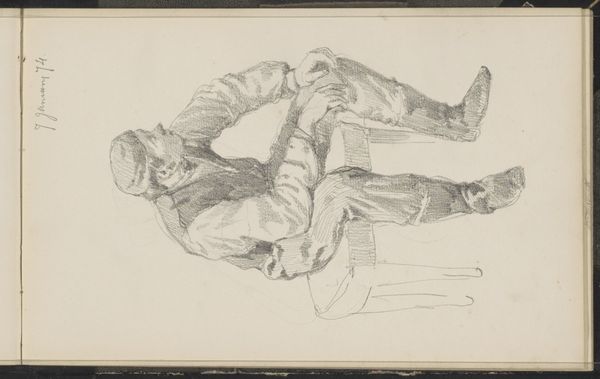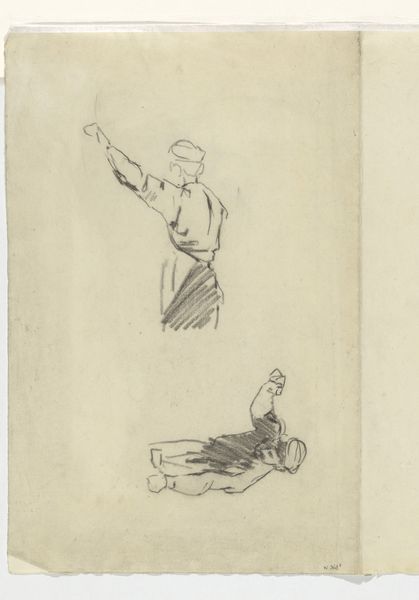
drawing, paper, pencil
#
portrait
#
drawing
#
paper
#
pencil
#
realism
Dimensions: 182 mm (height) x 115 mm (width) (bladmaal)
Curator: We’re looking at a pencil drawing titled "Mand, der bøjer sig ned," which translates to "Man Bending Down." It was created by Martinus Rørbye sometime between 1825 and 1826. Editor: There’s something almost hauntingly simple about this sketch. It’s stark, minimalist, and filled with a strange sense of anticipation. Curator: It is indeed simple. Rørbye, though, was deeply influenced by the social contexts he experienced while travelling, especially as Romanticism began shifting toward more realist depictions. His artwork often includes studies of figures—depicting them within various social classes. Editor: Seeing this, I can’t help but think about labor, about the relationship between the individual and the earth. The man is crouching, his posture suggesting perhaps planting seeds, perhaps searching for something lost. His clothing doesn't hint at upper class; one sees someone connected to manual work. Curator: That’s a solid observation. During the 1820s, Denmark, like much of Europe, experienced rapid social and economic shifts. There's a palpable movement away from idealised forms in art and culture generally. Notice the loose, suggestive lines; Rørbye focuses on conveying a sense of place and person rather than precise detail. This reflects the time's artistic shift towards realism in representing everyday life. Editor: How do we read this pose? I see the pose itself as humble, perhaps even submissive, depending on the unseen object of his attention. Without further contextual information, this invites viewers to consider labor roles assigned based on class, gender, etc., raising interesting questions. What does labour signify within a given framework? Curator: The drawing serves as a fascinating primary source of social documentation. Consider how Rørbye chooses to frame his subjects—not in heroic poses, but in moments of quiet introspection or simple, repetitive work. This democratic approach in choosing common men elevates daily life. Editor: Absolutely, placing emphasis where previously it wasn’t highlights the political act embedded within this quiet study of everyday activity. Viewing this with the understanding we do of that period, with consideration to gender and societal labor contexts can provoke many important queries on the function of labour and who conducts it even to this day. Curator: A fitting conclusion: It is through exploring these very interpretations of historical social context that "Man Bending Down" is just as potent as art created in modern day, giving agency and depth to the very people the work portrays. Editor: Precisely. I now wonder: whose story and work goes unacknowledged today? This inspires continued inquiries.
Comments
No comments
Be the first to comment and join the conversation on the ultimate creative platform.
